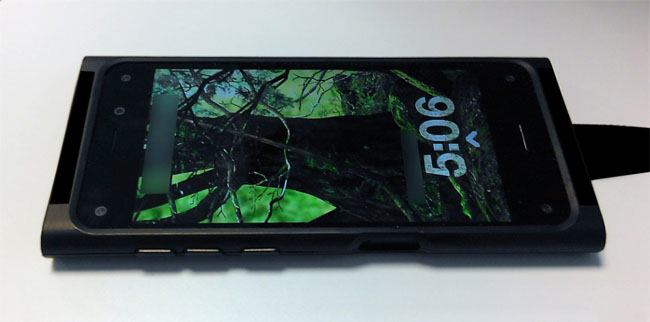5 Features the Amazon Smartphone Needs

By now it’s an open secret that Amazon’s going to be releasing a smartphone tomorrow. From what we’ve heard, the device is going to feature a total of six cameras, though only two of those will be for taking pictures. The other four, placed on the handset’s face, will track your face, and will help provide the illusion of glasses-free 3D visuals. Aside from that, we’ve heard that it’ll have a 4.7-inch display, 720p resolution, 2GB of RAM, and that it’ll be exclusive to AT&T, which might provide free data to subscribers using Amazon’s media services.
But are those details enough to sell a new smartphone in a market filled with Samsung Galaxies, iPhones, HTC One M8s, and more Nexi than you can shake a stick at? Here are five things I think the Amazon smartphone needs to offer consumers for it to stand up to the competition.
1) A super low price.
One of the reasons why the Nexus 5 from Google managed to get so much attention is because it offers plenty of power and options at a relatively low price. The Nexus 5 costs in the neighborhood of $350, give or take fifty bucks depending on where you’re buying it and what options you’re getting. Since most top-of-the-line phones offered by carriers cost around $200 after they’ve been subsidized by contracts, the Nexus 5’s pricing offered the potential for serious disruption of smartphone pricing schemes.
The Amazon smartphone, as I mentioned, seems to be exclusively sold by AT&T, which undoubtedly means a contract. A two-year agreement would feel a lot less painful if the handset only cost about $150, or maybe even $100. Considering Amazon’s track record with aggressive Kindle Fire pricing, it’s well within the realm of possibility that the company will bend over backwards to make its phone look like a good deal.
2) Amazon ecosystem incentives.
The promise of Prime Data is huge, and could be Amazon’s ace in the hole. Most contracts, with only a few exceptions, have data caps or surcharges for going over a monthly allotment. With apps like Netflix and Spotify, that’s not too hard to do. But if reports about Prime Data prove to be true, customers could conceivably stream music and video through Amazon’s own services without incurring extra data charges.
If Amazon and AT&T threw some extra goodies into the mix there – like a discounted Amazon Prime subscription, for instance – then a good deal could get even better.
3) More than just head tracking.
Okay, so we’ve heard that the main attraction of the Amazon smartphone is its ability to track your head and give you some neat 3D-style visuals. This promotional video seems to indicate that this feature is one of the smartphone’s flashiest incentives:
But that’s really not going to be enough to get too many people to make the switch. But what if the four other front-facing cameras can let users shoot 3D video? Or maybe provide some form of 3D mapping, like Google’s Project Tango? In short, some wacky 3D visuals might be nice for a second, but Amazon needs to make sure that feature’s more than a one trick pony.
4) Original 3D content.
On the subject of 3D visuals, there is one area where Amazon might be able to offer up something unique: original 3D programming. When Nintendo’s 3DS was first announced, it seemed like a no-brainer that a partnership with Netflix or some other video streaming service could provide 3D movies directly to users’ faces. So far, that has yet to materialize.
But Amazon has its own studio making original content and piping it exclusively to Prime subscribers. Why not leverage that into giving super-exclusive 3D programming to smartphone buyers? If the device is capable of offering it, it’d be foolish not to take advantage of it.
5) Real Android? Please?
This seems like the least likely possibility, but I’m going to hold onto this dream. The forked version of Android that Amazon stuck on the Kindle Fire is kind of crappy. People who buy Android devices want to experience the OS as it was designed.
People with smartphones use them because of the ways they help them manage their lives better. They can access their Google calendars and address books, or Apple’s iCloud and iCal, or Microsoft Outlook and OneDrive. Tablets are mostly consumption machines, while smartphones are, more or less, actually built for productivity.
Having a more traditional mobile operating system on the device is crucial to attract users who want to do more with their phones than simply stare at glasses-free 3D images. Loading the device with Android – and not the Fire OS – will help make that happen.